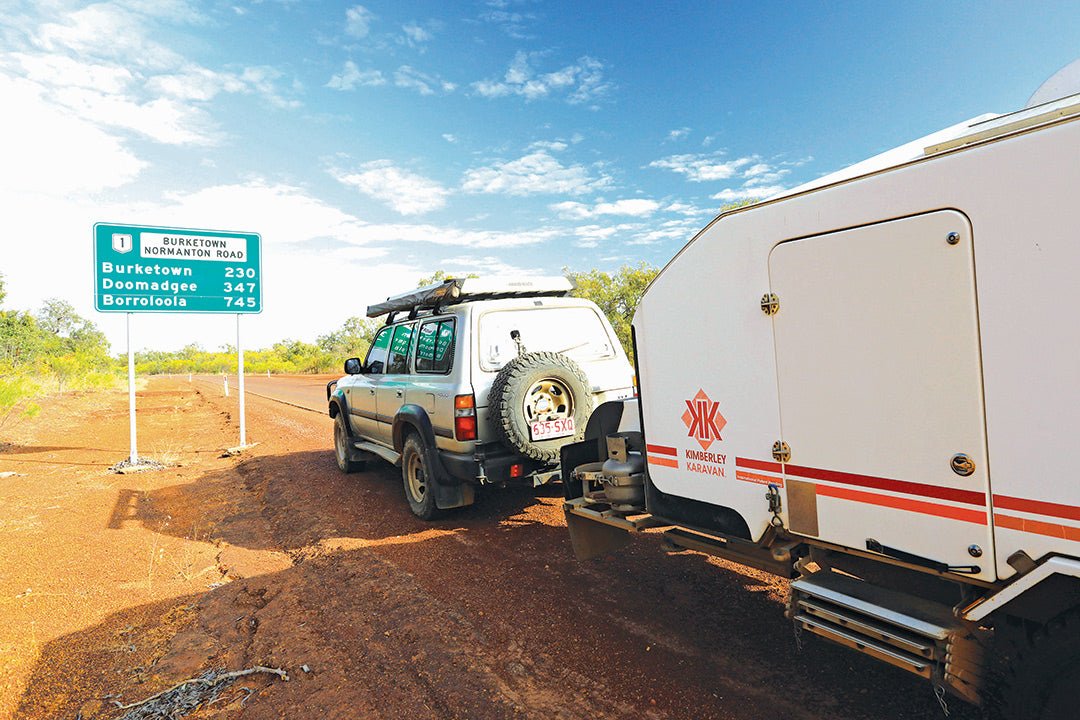

When Burketown was established in the 1860s, it was a tiny outpost on a remote frontier in western Gulf Country, about halfway between Brisbane and Darwin. European explorers had earlier hailed the region’s pastoral potential as ‘The Plains of Promise’, but nature and circumstance conspired against the town during its formative years.
Despite seemingly overwhelming odds, Burketown has survived as a quintessentially outback community with strong rural ties and an economy powered largely by tourism as 'The Barramundi Capital of Australia'.
The Gulf Savannah
Burketown lies on the northern edge of the Gulf Savannah, a vast expanse of flat, low-lying plains stretching from the Great Dividing Range to the Northern Territory border. At around 200,000sq km, it is one of the largest savannah bioregions in the world, blanketed by native grasses, acacia shrubs and open woodlands of eucalypts and paperbarks.
The undulating plains south of Burketown are drained by several major rivers – the Gregory, Nicholson and Leichhardt – which have their headwaters among the plateaus and ranges hundreds of kilometres inland. The Gregory is the largest perennial river in this semi-arid region and one of the few permanently flowing rivers in the north-west of Queensland. The Gregory joins the Nicholson River south-west of Burketown and together they discharge into the Gulf of Carpentaria at Pasco Inlet. Unlike the Gregory and the Nicholson, the Leichhardt flows intermittently and its upper reaches retract to a series of waterholes in the dry season.
The rivers’ lower reaches flow across a narrow coastal plain that extends along the Gulf’s southern shore. Their meandering estuaries form extensive freshwater wetlands merging with saltpans and intertidal mudflats fringed by mangroves. These varied coastal environments are internationally Important Bird and Biodiversity Areas (IBA), providing breeding habitats and feeding grounds for more than 200 species of resident waders and migratory shorebirds. The intertidal zones are also nurseries for significant numbers of crocodiles, mud crabs, barramundi and prawns.
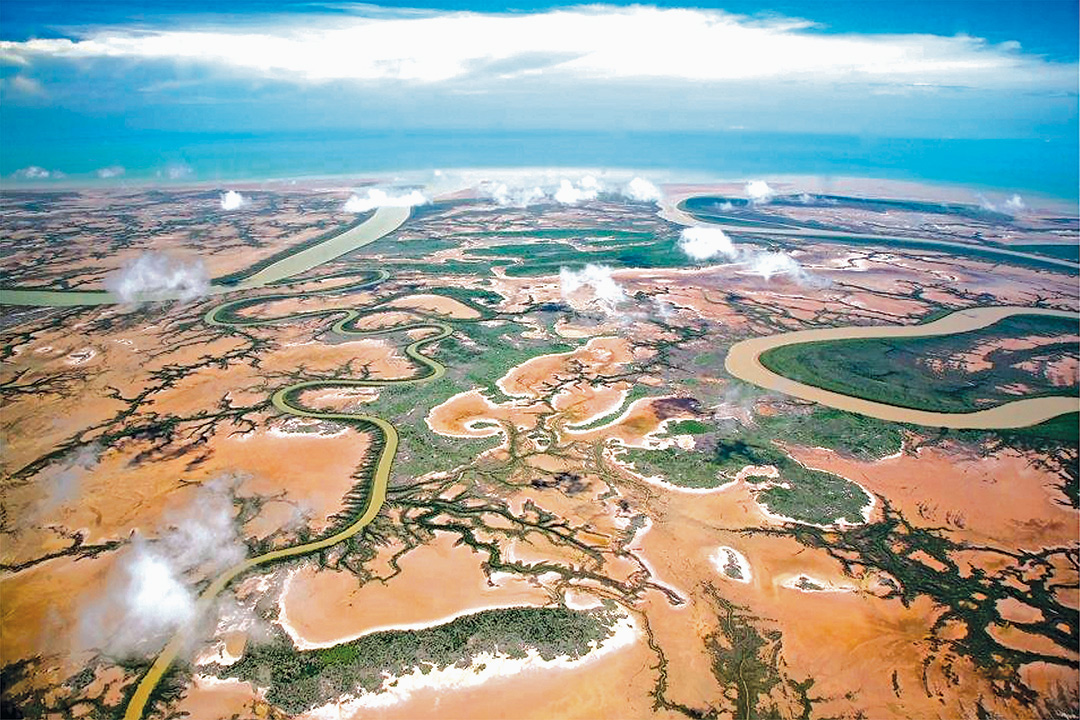 The Gulf Coast is a maze of estuarine habitats for migratory shorebirds;
The Gulf Coast is a maze of estuarine habitats for migratory shorebirds;
Savannah climate
The Gulf plains bask in a tropical monsoon climate with two distinct seasons: a summer wet season (November-March) and a winter dry season (April-October). Temperatures are uniformly warm to hot throughout the year.
During ‘The Wet’, humid north-westerly monsoons sweep down from Southeast Asia, generating spectacular thunderstorms and heavy downpours that account for most of the annual rainfall — about 750mm on the coast to 500mm inland. This is the ‘green season’ when the countryside is lush, rivers are flowing and birdlife is prolific. A strong monsoon can also generate cyclones capable of dumping as much as 250mm in a single day and causing widespread flooding.
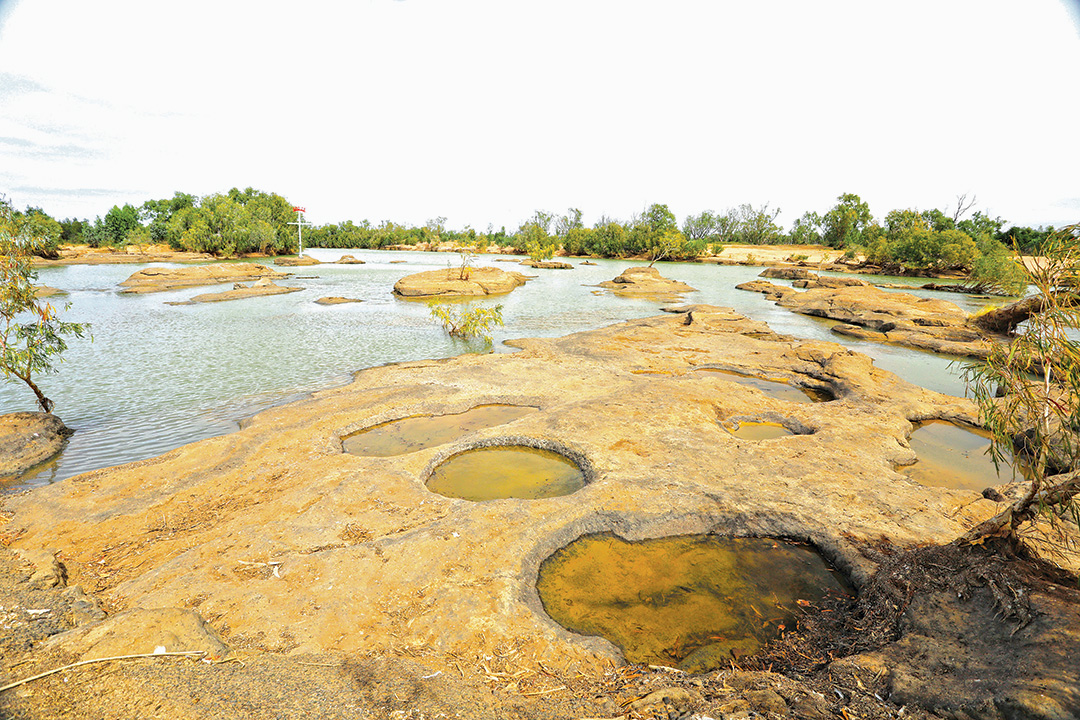 Rock pools beside the causeway over the Leichhardt River
Rock pools beside the causeway over the Leichhardt River
In ‘The Dry’, balmy south-easterly winds deliver cloudless skies, cool nights and very little rain. Humidity is low, the countryside turns golden and birdlife is concentrated around the shrinking waterholes. This is the best time to travel in Gulf Country.
Between August and November, Burketown is the best place in the world to witness a rare meteorological phenomenon known as the ‘Morning Glory’ — tubular clouds up to 1000km long and 1000-2000m wide that roll in from the Gulf at speeds of up to 60km/h. Thrill-seeking gliders ‘surf’ these gigantic atmospheric waves for hundreds of kilometres, while the local Savannah Aviation offers charter flights for sightseers wishing to view the spectacle from the air.
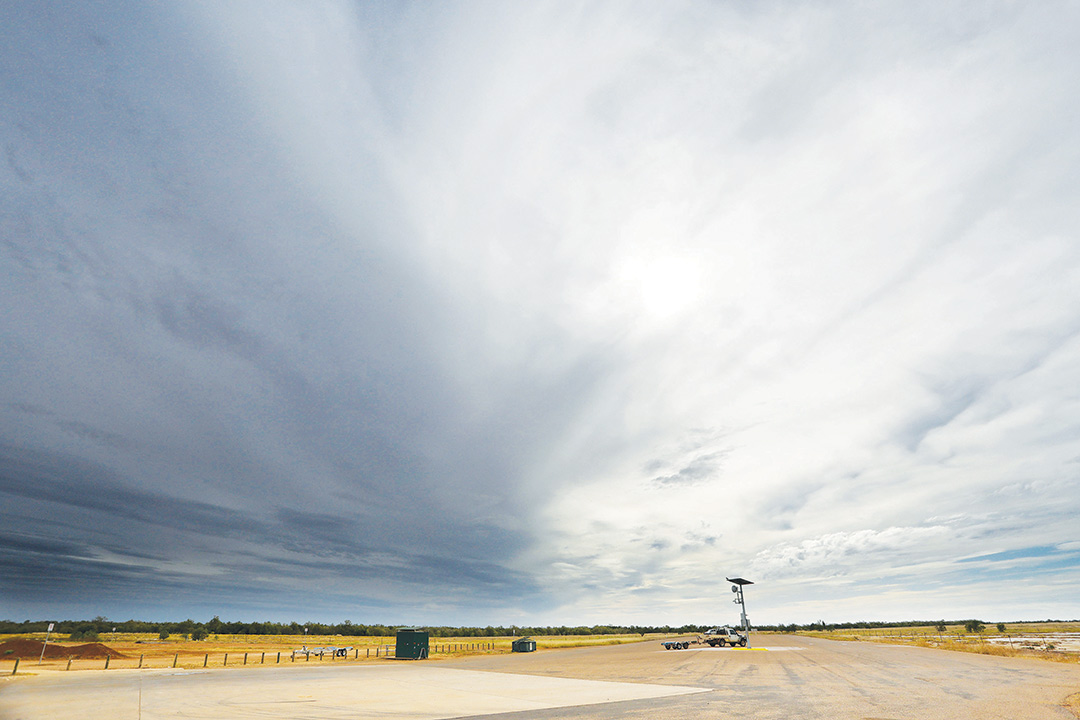 Storm clouds looming in across the Gulf coast
Storm clouds looming in across the Gulf coast
Aboriginal heritage
For countless millennia before the arrival of Europeans, the western Gulf Country was the ancestral homeland of the Mingginda, Gangalidda, Garawa and Waanyi peoples. The incursion of white settlers severely affected these tribes, who offered bitter resistance in violent clashes that claimed lives on both sides. Eventually, with their lands taken and resistance broken, many Aboriginal people were forcibly removed to reserves or missions at Doomadgee and Mornington Island. Some were placed on stations to provide labour in the cattle industry.
In 2015, the Federal Court formally recognised the Native Title rights and interests of the Gangalidda and Garawa people over approximately 9350sq km of land and coastal waters in and around Burketown. The non-exclusive rights include hunting, fishing, camping, the conduct of religious and spiritual activities and ceremonies, and the right to maintain and protect places of cultural significance.
 Give road trains a wide berth on the unsealed Burketown-Normanton Road
Give road trains a wide berth on the unsealed Burketown-Normanton Road
European exploration
The first Europeans to visit the Gulf were Dutch mariners Willem Janszoon (1606), Jan Carstensz (1623), who named it in honour of Pieter de Carpentier, the Governor-General of the Dutch East Indies at that time, and Abel Tasman (1644).
The southern coast was later explored and charted by Matthew Flinders (1802) and John Lort Stokes (1841). Stokes discovered the mouth of a river he named the Albert (after Queen Victoria’s consort, Prince Albert) and followed it upstream for about 50km in a long boat. He also explored the surrounding hinterland on foot and was so impressed by the lush vegetation and seemingly endless expanse of grass he named the region ‘The Plains of Promise’.
Ludwig Leichhardt was the first overland explorer in the area, arriving at the Gulf in July 1845 during his marathon expedition from Brisbane to Port Essington (NT). He was followed by Augustus Gregory who traversed the Top End from west to east during his North Australian Expedition in 1855-56.
After the disappearance of Burke and Wills, William Landsborough was commissioned to lead an expedition through the Gulf Country in search of them. For several months in late 1861, Landsborough explored the region from the Barkly Tableland to the Norman River, using the vessel Firefly in the Albert River and a depot beside it on the west bank as a base. He left the base in January 1862, journeying south to continue his search but by May that year he had learned the fate of Burke and Wills. Landsborough continued travelling overland to Melbourne, where he was greeted as the first explorer to cross the Australian continent from north to south.
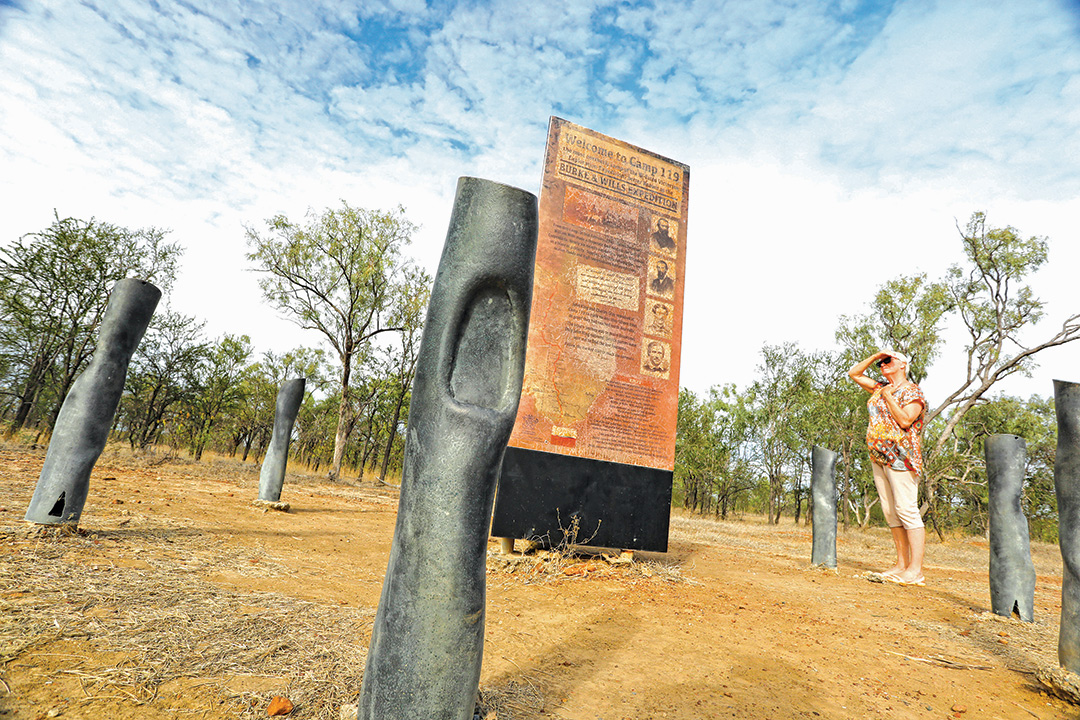 Burke and Wills Camp 119 about 40km west of Normanton
Burke and Wills Camp 119 about 40km west of Normanton
Settlement and abandonment
Landsborough’s report on the favourable grazing country he traversed sparked a rush for land in the Gulf savannah. By 1864, pastoralists had taken up huge holdings in the district (some as large as 400,000ha), and the fledgling settlement of Burketown was established beside a port on the Albert River to serve as the regional supply centre for them. Entrepreneurs like Robert Towns (founding father of Townsville) entertained a ‘vision splendid’ for the development of the port as a steppingstone to the Asian markets.
In September 1865, Landsborough returned to Burketown as Police Magistrate and Commissioner of Crown Lands in Carpentaria. He was accompanied by Lieutenant Wentworth Uhr and a contingent of native police which quickly set about crushing Aboriginal resistance to pastoral expansion. All boded well for the town’s prosperity until, in 1866, the vessel Margaret and Mary docked at the port with typhoid among its passengers and crew, sparking an epidemic which quickly decimated the settlement. ‘Gulf Fever’ (as it was known) claimed the lives of an estimated 100 people and forced the evacuation of the survivors to Sweers Island and Normanton and led to the abandonment of the town for almost two years.
Boom and bust
Following re-settlement, Burketown stumbled through a succession of boom-and-bust cycles during the next 50 years. The pastoral industry continued, and cattle numbers rose, but a glut of beef pushed prices down and forced graziers to adopt drastic measures to stay in business.
While not an economic use of the animal, several boiling down works were established in Burketown to produce tallow, brine-cured meat and hides for export to Batavia and southern markets. These businesses came and went according to market demand and the availability of capital to maintain them. Maritime trade in the Gulf and along the Northern Territory coastline sustained the port as a refitting and refueling base, but access was restricted by tides and the vagaries of shifting sand bars in the river channel.
A promising upturn of fortunes in the 1880s was struck down by droughts, which caused massive stock losses, and a cyclone in 1887 that destroyed most of the town. Mining began in the region in the 1890s and contributed to a revival of Burketown’s economy, including the establishment of a new meatworks and boiling down plant. However, further droughts, a state-wide depression and poor business decisions caused the factory to close until the early 1900s. A new operation had mixed fortunes and was eventually abandoned by the 1920s.
The regional economy today
In modern times, the region’s economy has continued its historical reliance on grazing with about two million head of cattle over 100 pastoral properties. However, since the 1990s, there has been greater emphasis on the exploitation of the region’s large mineral reserves, such as the New Century Mine near Lawn Hill, 250km north-west of Mount Isa. The New Century is one of the world’s largest zinc mines, exporting its product through the port facility at Karumba to smelters in Australia, Europe and Asia.
Tourism in the Gulf has grown rapidly over the past 10 years, mainly as a result of improvements to the regional road network, and the region attracts an estimated 100,000 visitors annually. The industry is driven largely by nature-based activities such as camping, bird watching, fishing and fossicking, as well as Indigenous and non-Indigenous culture and heritage. As well as its close proximity to the pristine waters of the Gulf, Burketown is regarded as the northern gateway to the spectacular Boodjamulla (Lawn Hill) National Park and the fossil-rich Riversleigh World Heritage Area.
Burketown attractions and camping
With a resident population of around 204, give or take, Burketown is a pleasant, compact township set close to the Albert River, just 30km from the coast. Its relative isolation and friendly, relaxed lifestyle are defining features which make it a worthwhile destination deep in the heart of Gulf Country. Visitors are well catered for in facilities that include a quiet caravan park with all the basic modern amenities, hotel, takeaway cafe, butcher, bakery, general convenience store and service station. When travelling this far into the outback, it’s comforting to know that the town is serviced by the Royal Flying Doctor Service from Mount Isa, just 338km away by air.
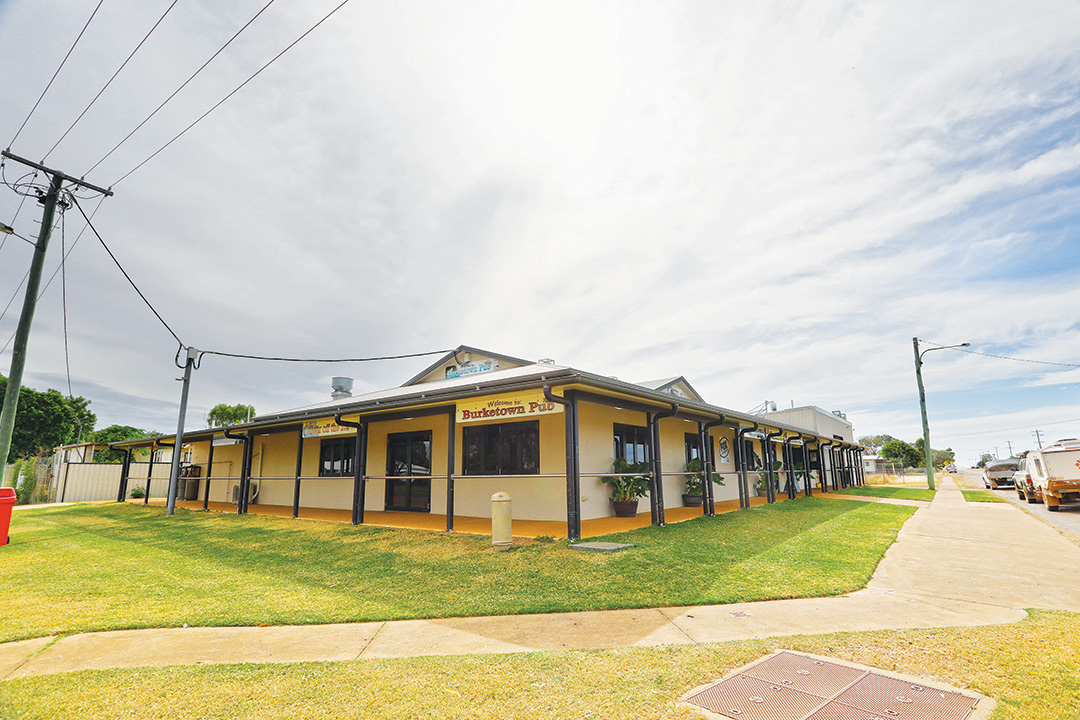 The present-day Burketown Hotel is a popular watering hole
The present-day Burketown Hotel is a popular watering hole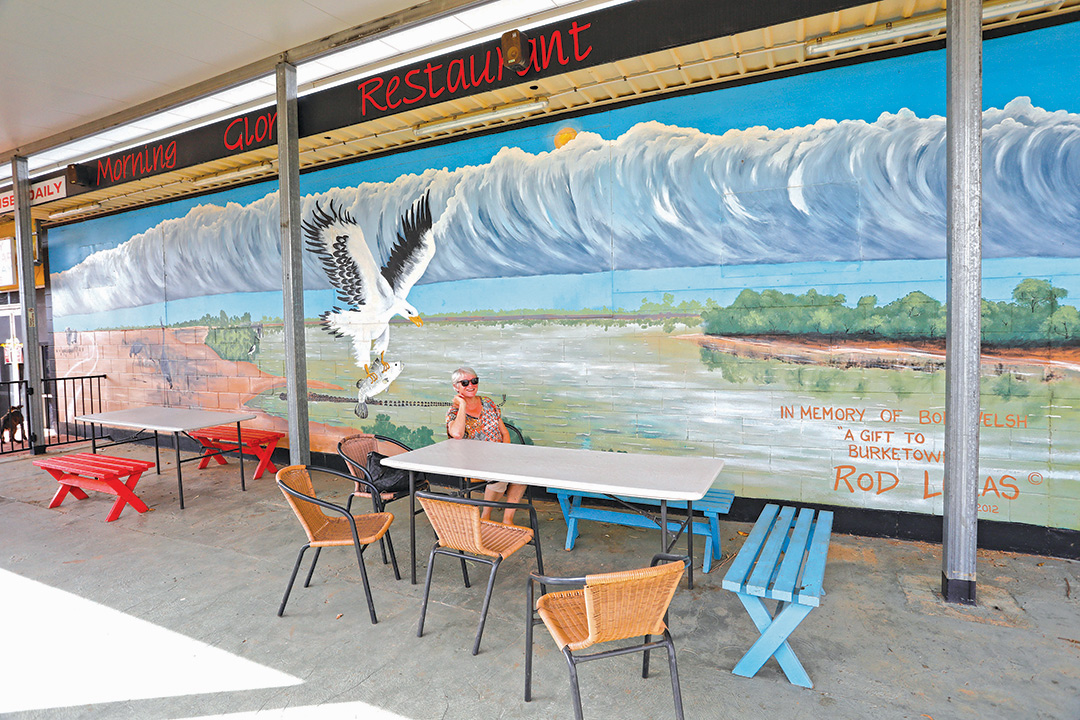 The Morning Glory Cafe sells the best burgers in town
The Morning Glory Cafe sells the best burgers in town
Burketown’s primary appeal for many visitors is the excellent barramundi fishing in the Gulf and local waterways. As the self-proclaimed ‘Barramundi Capital of Australia', the town hosts the World Barramundi Fishing Championships each year in April, offering over $7500 in prize money, with $2600 for the heaviest single catch.
The council-managed wharf and boat ramp provide safe and easy access to the river and is a popular spot for fishing and mud-crabbing among the surrounding mangroves. Camping is also available on site. (Fishing and camping permits from the Gangalidda Garawa traditional owners are available from the Burketown Visitor Information Centre.)
If you don’t have your own boat, Yagurli Tours offers half- or full-day fishing charters and sunset cruises on the river, as well as cultural excursions that include stargazing with Indigenous Dreamtime interpretation of the heavens, and a 4WD tag-along tour of the district’s natural and historical attractions.
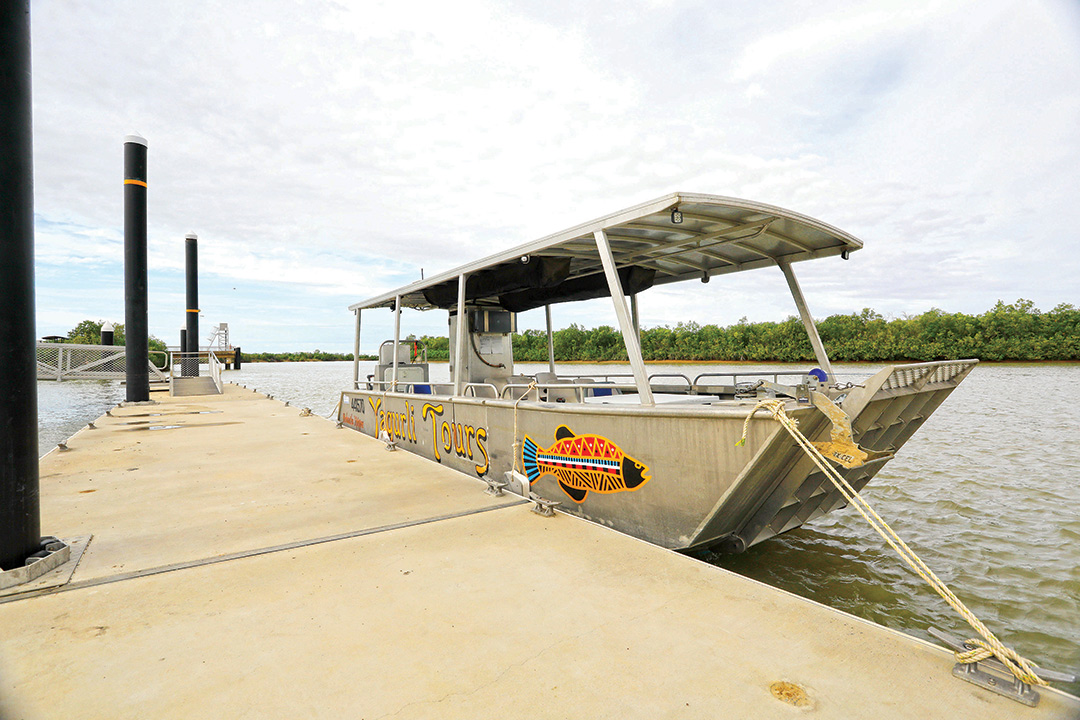 Yagurli Tours runs eco-charters on the Albert River
Yagurli Tours runs eco-charters on the Albert River
Those who prefer to ‘do their own thing’ can grab a brochure from the local visitor information centre, housed in the former Post and Telegraph Office (est. 1887), and set off on a self-drive tour of the history hotspots in and around the town. Here are some highlights.
Burketown Cemetery provides a fascinating journey through the town’s turbulent origins and is the site of one of Australia’s largest mass graves, containing more than 200 victims, including those who died in the ‘Gulf Fever’ outbreak in 1866.
Drilled in 1897 to a depth of 702m to provide the town’s early water supply, the Artesian Bore’s highly mineralised water (now undrinkable) still flows freely at 68°C through a technicolour mound to create a wetland refuge for wildlife and excellent photographic opportunities at dawn and dusk.
Following the signs to ‘Historic Sites’ on the northern outskirts, visitors come to Colonial Flat containing several locations of interest. One is the site of the Old Boiling Down Works that operated intermittently in the 1860s and is now littered with the rusting remains of boilers and other equipment that once made a significant contribution to the town’s early development.
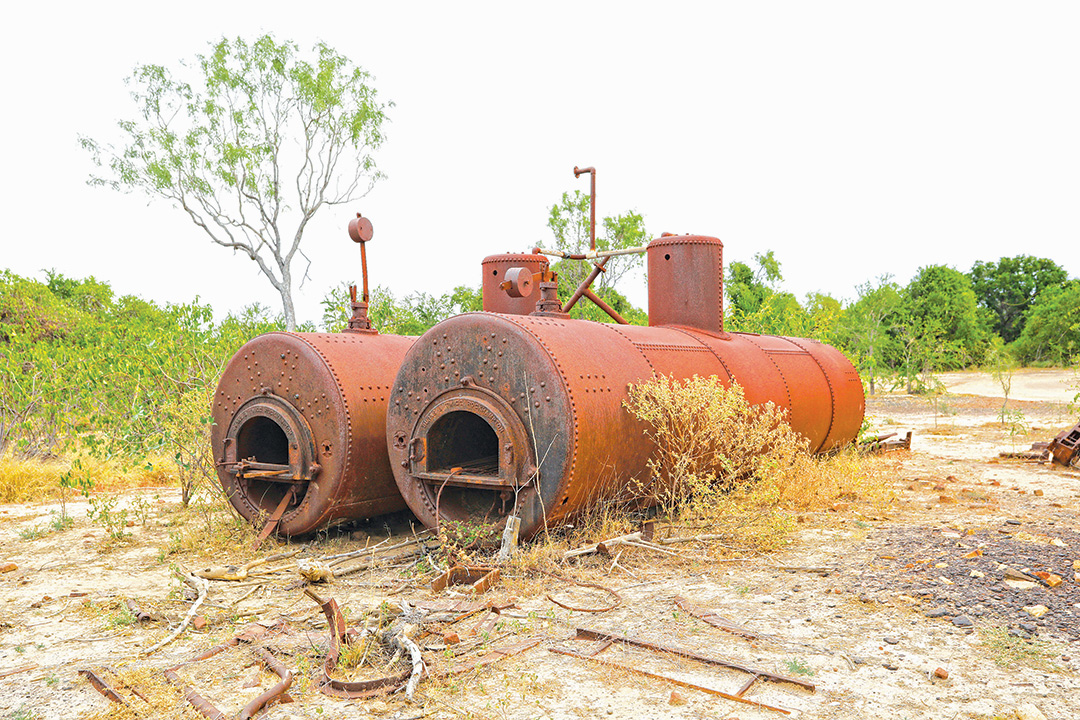 Rusting relics from the Boiling Down Works that operated during the 1860s
Rusting relics from the Boiling Down Works that operated during the 1860s
Another is the site of the Landsborough Tree. The original tree was a large coolabah that stood in the depot used by Landsborough during his exploration of the region. Before departing the depot in February 1862, crew of the support vessel Victoria buried a water tank containing supplies, and marked the tree to indicate the tank’s location should Landsborough need them. The original tree was vandalised in 2002 and has since been replaced by a new coolabah sapling in the same location.
In a sense, this renewal symbolises Burketown’s resilience and its place among the Plains of Promise.
 Burketown's war memorial near the visitor centre
Burketown's war memorial near the visitor centre
Contacts
Burke Shire Council
65 Musgrave Street, Burketown
P: 07 4745 5100
E: office@burke.qld.gov.au
Click here to check road conditions
Burketown Visitor Information Centre
87 Musgrave Street, Burketown
P: 07 4745 5111
E: info@burketown.com.au
Open from May to October, Monday to Friday 9am – 4pm
During off-season, contact the Carpentaria Land Council Aboriginal Corporation
Burketown Caravan Park
23 Sloman St, Burketown
P: 07 4745 5118
E: stay@burketowncaravanpark.net.au
Yagurli Tours
87 Musgrave Street, Burketown
P: 07 4745 5111
E: bookings@yagurlitours.com.au
THE NEXT STEP
If you want to learn the latest caravan news, find the most innovative new caravans and camping gear or get inspired to plan your next adventure to some of Australia's best getaway destinations, subscribe to our weekly newsletter. We promise to send you only the best content.
Related Articles:
The Savannah Way: Western Australia to Queensland







